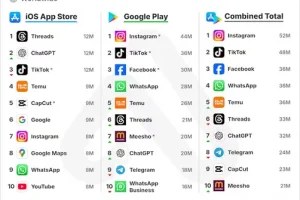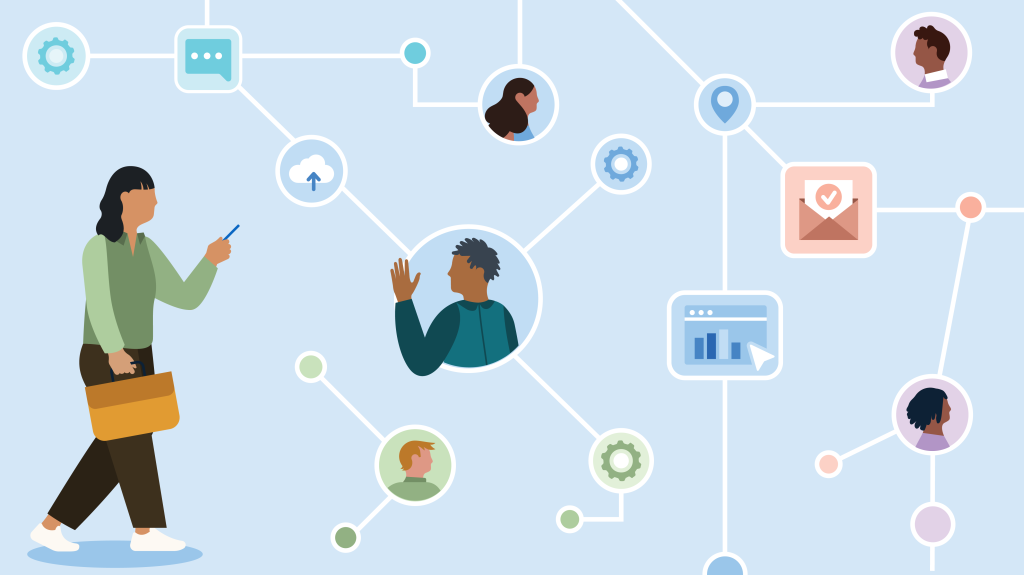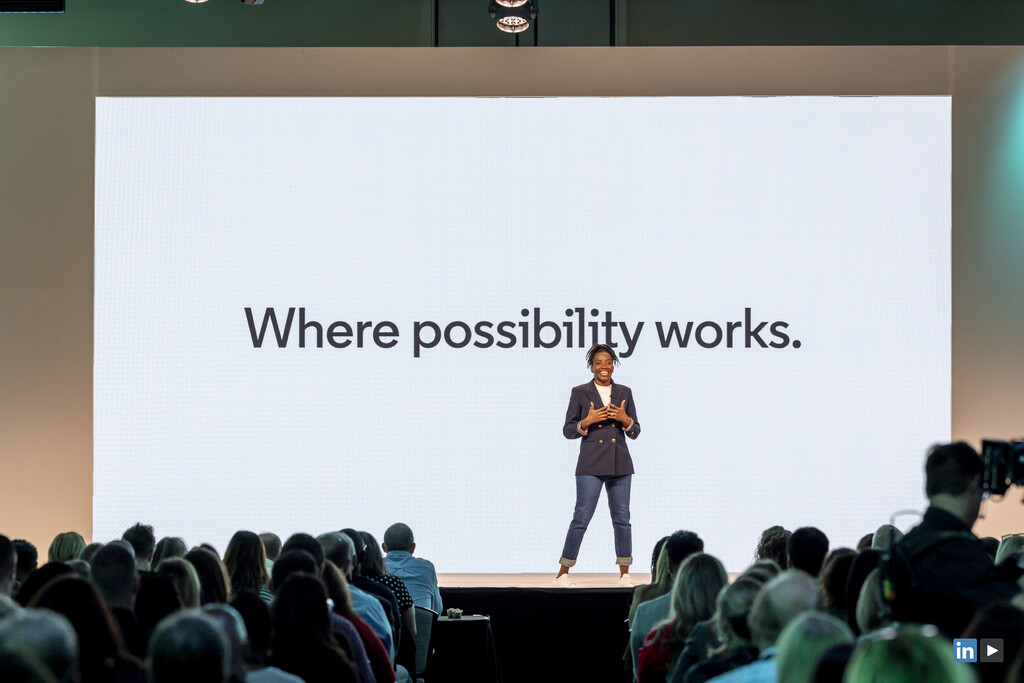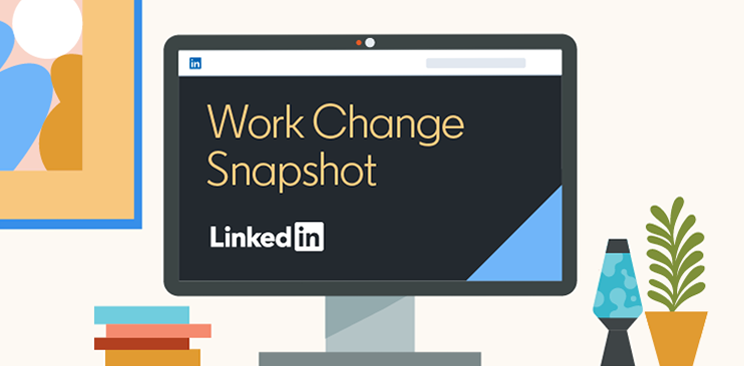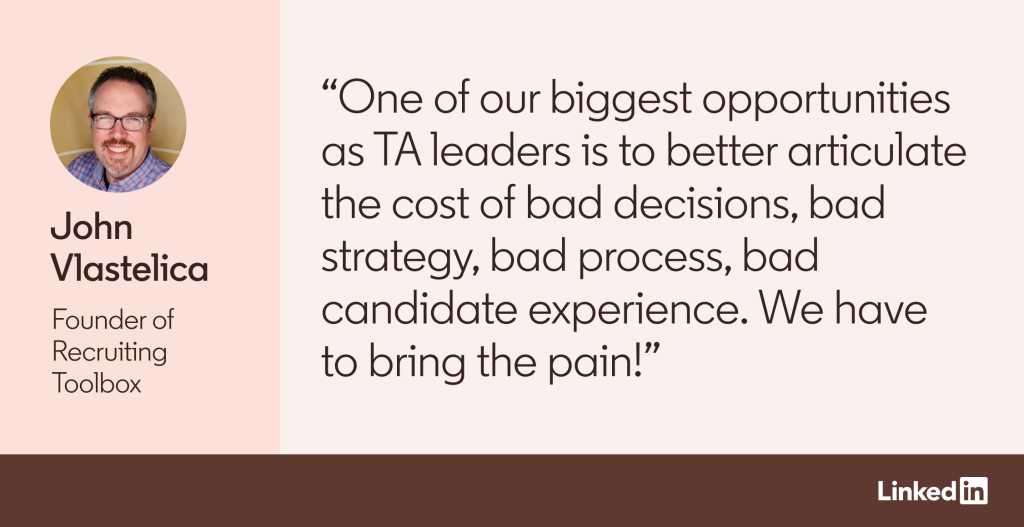Skills-first hiring will become more achievable
There are many benefits to hiring for skills over pedigree. “Focusing on skills and past experience and performance,” says Stacy Donovan Zapar, founder of The Talent Agency, “is a much more accurate predictor of success and will lead to stronger, more diverse teams that have both the breadth and depth of skills to deliver.”
But a key barrier to skills-first hiring is human bias. While there is concern around AI perpetuating bias, it also has the potential to reduce bias in hiring decisions. Frida Polli, chief data scientist at the software development company Harver, noted in an article in the Harvard Business Review that if AI shows bias, it can be addressed and corrected (unlike, say, the unconscious bias of a human). And equal AI treatment combined with its ability to assess an entire candidate pipeline is a starting point for fostering equity.
“We’ve talked about diversity, equity, and inclusion for a long time, and equity has been a really difficult thing to achieve,” Jo-Ann Feely says. “But AI can help unlock equity in the job market by making candidates way more discoverable and by focusing not only on their current skills but also their adjacent skills and potential.”
TA will become more agile and include more specialized roles
Many of the experts we interviewed believe that the recruiter role will transform and possibly become more specialized. “You’re going to see more fluidity in the recruiter role,” Jennifer Shappley says. “You’re going to see recruiters looking at areas of the talent space and HR functions where they can specialize.”
For example, some recruiters may be focused on DEI while others may become internal mobility advisors, helping employees navigate their next roles within a company. And yet others could have roles that bridge TA and learning and development.
Hung Lee, a recruiting industry influencer and editor of the talent business newsletter Recruiting Brainfood, predicts that even the name of the role could change, from talent acquisition to “something like talent delivery or talent fulfillment.” He explains that a business may have a problem to solve or a skill that they need, and that recruiters will “go in and deliver those skills, whether they find them internally or externally.”
A Goldman Sachs report on the effects of AI on economic growth echoes this sentiment, saying, “Worker displacement from automation has historically been offset by creation of new jobs, and the emergence of new occupations following technological innovations accounts for the vast majority of long-run employment growth.”
The most successful recruiters will lean into their soft skills
As much as recruiters will need tech skills in the future, their very human soft skills will become more important than ever.
While some companies may try to automate more of the hiring process, especially for roles for which there is an abundant labor supply, companies will increasingly rely on recruiters’ soft skills for roles where labor is in short supply. Why? Because some skills simply can’t be automated. These include having a nuanced understanding of a candidate’s needs; reading between the lines on what a hiring manager wants; negotiating with or persuading a candidate; using data to craft a compelling story; and making the close.
“It’s almost like the service you experience in executive search will become the standard in recruiting,” Jo-Ann Feely says, “because that depth of understanding — of what skills are needed, what the team makeup should be, and whether the manager might be willing to hire someone with 60% or 70% of the skills needed — will become even more important.”
How to prepare your teams for an AI-powered future
Experiment with what works (and doesn’t) as you upskill your team
If there’s one thing our experts agree on, it’s that talent leaders need to upskill both themselves and their teams on how to use AI efficiently now. “Talent leaders really need to take a few days to just dive into these tools so that they can be making decisions from a position of knowledge and not theory,” Hung Lee says.
Because this is a time of experimentation, Glen Cathey adds, talent teams should be doing “some serious A/B testing” to see if AI actually drives better outcomes. He cautions that it could take more than a year to do this right — asking questions such as “How does this affect the quality of hire?” and “What if the quality of hire goes down?” — and that recruiters would be wise to raise their hands and get involved.
“It needs to be very thoughtful,” Glen explains, “and teams are going to have to look at not just the ROI and cost savings, but what is the impact to applicant, candidate, and talent experience?” He suggests that you look at the impact on the experience, time to hire, or other metrics your company uses to gauge the efficacy of your hiring process. “Even if it does save money, you might find that it has negative impacts in other areas,” he adds, “and companies will have to then make strategic decisions, asking, ‘What do we care about most?’”
Offer recruiters additional training on skills that will be essential
As we mentioned above, soft skills will become increasingly important for recruiters. LinkedIn offers its TA team a master storytelling training, as well as sessions on influencing and advising. “We’ve been really focused for a while on these core skills that we think make a really great recruiter,” Jennifer Shappley says.
She predicts that organizations will put extra effort into how they train recruiters and that training will focus less on process and more on soft skills such as negotiating, influencing, and telling a story. “Because if AI can do some of the other stuff,” she says, “then I need to double down on really making sure that I’m training my team on those things that AI can’t do.”
In addition, Jennifer shares that her team has been increasingly focused on becoming fluent in using AI tools and helped train the AI in LinkedIn’s AI-generated messages, which meant that the team grew familiar with the technology. They’re also learning how to recruit and assess AI talent and recently asked a few of their more AI-savvy recruiters to build a training course that was shared with the entire team. “It’s not enough for a few folks in TA to understand what great AI talent looks like,” she says. “If we’re going to win this talent race, we need to be training across our entire team.”
Implement guidelines for using AI — and be aware of the changing legal landscape
In order to use AI responsibly, it’s a good idea to create principles and ethical guidelines for its use. For example, LinkedIn’s guiding principles emphasize that AI technology needs to advance economic opportunity, uphold trust, promote fairness and inclusion, provide transparency, and embrace accountability. IBM lists its foundational properties for AI ethics as:
- Explainability. An AI system should be transparent about what went into its algorithm.
- Fairness. People, or groups of people, should be treated equitably by the technology.
- Robustness. The system needs to be actively defended from adversarial attacks.
- Transparency. To reinforce trust, users must be able to see how the service works and evaluate how well it’s functioning.
- Privacy. An AI system needs to safeguard consumers’ privacy and data rights and let users know how their personal data will be used and protected.
Glen Cathey says companies can use principles like these as well as codes of conduct, best practices, checklists, and audits to ensure employees comply with the legal and ethical requirements and expectations for using AI. AMS ensures they are using AI ethically and in compliance with local laws by partnering with an AI risk management and auditing company. “We are constantly looking at how TA technology is being impacted by AI,” Jo-Ann Feely says. It’s also essential to look closely at AI vendors or partners and ensure they are using AI responsibly, she adds.
This is especially important as lawmakers globally are taking steps to prevent discrimination and bias resulting from using AI tools in hiring. For example, New York City recently adopted specific rules for the use of AI in making automated hiring and promotion decisions.
Final thoughts: “None of this happens tomorrow”
With the introduction of GAI, it may seem like the talent world is transforming so quickly that none of us can keep up. But as Jennifer Shappley points out, “None of this happens tomorrow.”
It’s still early in the adoption of GAI, and most talent teams have just begun to experiment, figuring out what works and what doesn’t and how it can improve the hiring process.
“I think the main thing is really encouraging leaders to get back to what their purpose is in recruiting and remembering the experiences they want to be creating,” Jennifer says. “Don’t ever let new technology tell you what your strategy should be. Make sure you’re really grounded in your purpose and asking: ‘What is our strategy?’ ‘Who do we serve?’ ‘What are the experiences we want to create?’ And then you can ask: ‘How can AI help us do this better?’”





